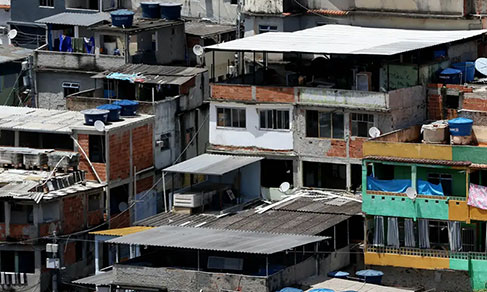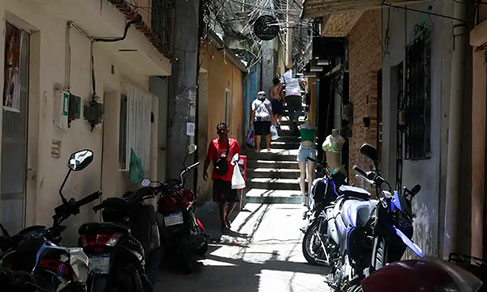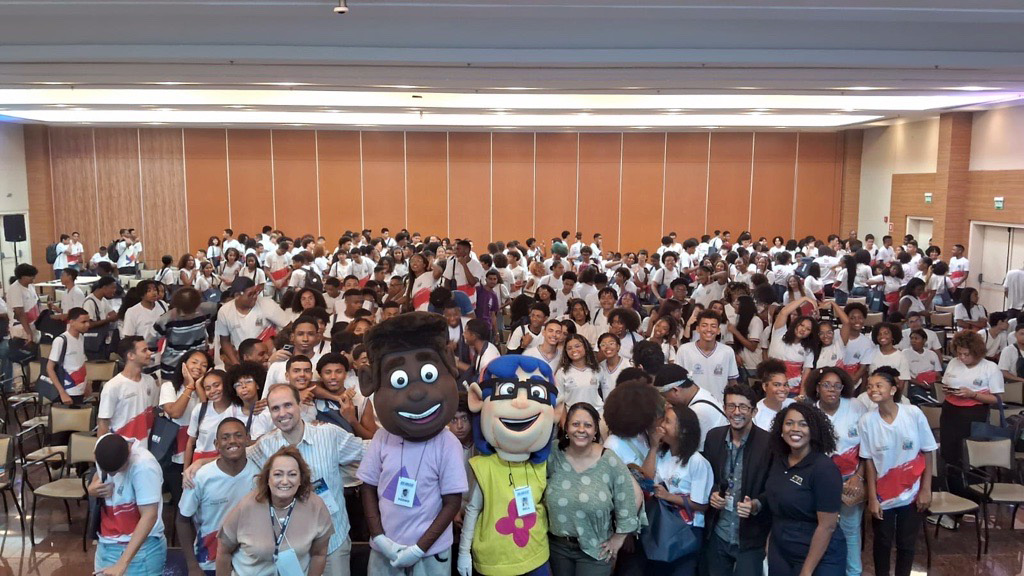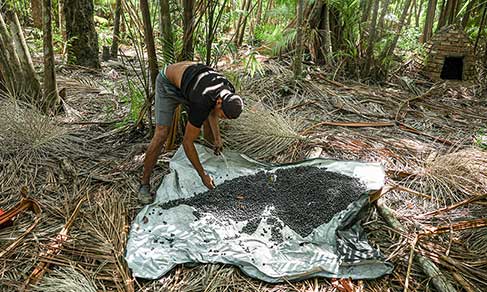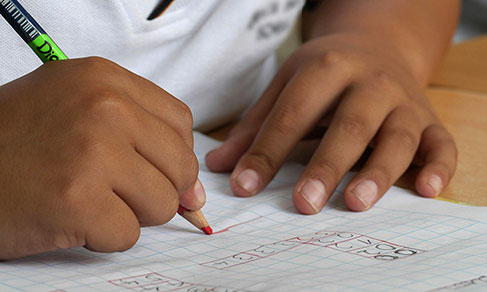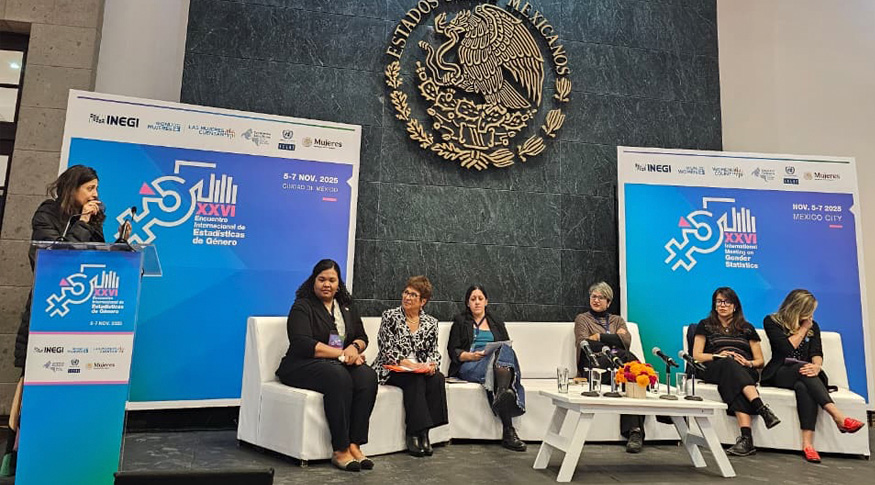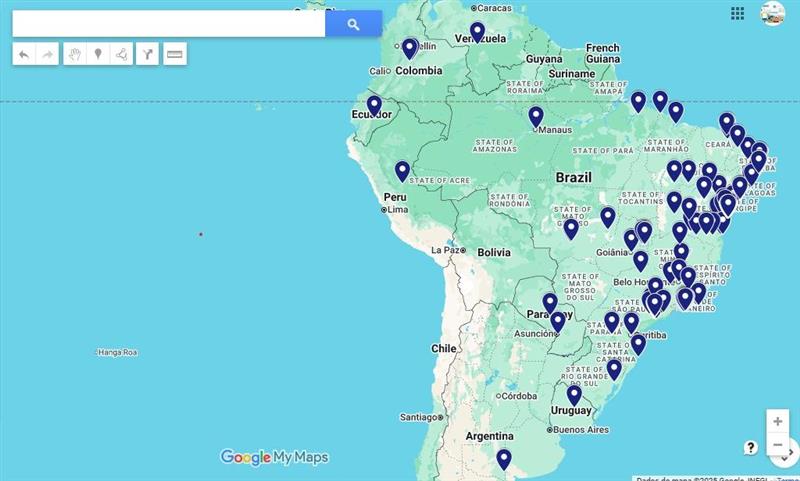2022 Census
2022 Census: half of Brazilian indigenous population is under 25 years
May 03, 2024 10h00 AM | Last Updated: May 07, 2024 11h40 AM
Highlights
- Indigenous people show a median age of 25 years, 10 years below the median age of the resident population in Brazil. When they live in indigenous lands, they have a median age of 19 years, 16 years below the median age of the resident population in Brazil.
- Acre shows the lowest median age among the indigenous population (17 years of age), followed by Roraima and Mato Grosso (both with 18 years).
- It is unveiled that 56.10% of the indigenous people have less than 30 years of age, whereas the resident population in Brazil has 42.07% of the population in this range. On the other hand, 10.65% of the indigenous population has 60 years or over, whereas this age range represents 15.81% of the resident population in Brazil.
- The highest percentage weight of indigenous people is concentrated in the age range between zero and 14 years (29.95%). In indigenous lands, this age range reaches 40.54%.
- Considering the age groups recommended to attend basic education, the indigenous population up to 17 years of age adds up to 606,359 indigenous people.
- Comparing the 2010 and 2022 Censuses, the indigenous lands that showed the highest absolute positive change in the population aged 17 years and less were TI Raposa Serra do Sol, in Roraima (more 4,815 indigenous people in this range), TI Munduruku, in Pará, with a change of 3,134, and TI São Marcos, in Roraima, with an absolute change of 2,280 indigenous people aged 17 years and less.
- The North Region has the lowest ageing index of the indigenous population: 19 persons aged 60 years and over for each 100 indigenous persons up to 14 years of age.
- The age pyramid of the indigenous population has a triangular format, with a larger base, steeper in the indigenous lands.
- Sex ratio of the resident population is 94.25, i.e., 94 men for 100 women. It was 97.07 among indigenous people, indicating that for each 97 indigenous men, 100 indigenous women were identified.

The results of the 2022 Population Census show that the younger population has a higher weight among the indigenous people compared with the resident population in Brazil. It is unveiled that 56.10% of the indigenous people have less than 30 years of age, whereas the resident population in Brazil has 42.07% of the population in this range. The median age, which is an indicator that divides a group among those 50% younger and 50% older, was 25 years for the indigenous people and 35 for the Brazilian population as a whole.
This information is part of the release 2022 Population Census: Quilombola and Indigenous People, by sex and age, according to specific geographies - Population results. The data are released today, May 3, at 10 AM, in an event held in the Campinho da Independência Quilombola Community, in Paraty (RJ), broadcast by the IBGE Portal and IBGE´s social media. The complete data can be researched on Sidra, in the 2022 Census Overview and in the Interactive Geographic Platform (PGI). The release also brings information on sex and age of the quilombola population, as mentioned in this news.
“The publication updates the demographic profile of this population in relation to the 2010 Census. These data are important to subsidize educational policies of the indigenous population, who have a distinctive education policy, as well as health policies, like children vaccination and assistance, which depend on age range and sex,” explains Marta Antunes, in charge of the IBGE´s Traditional Communities and Peoples Project.
Indigenous people show a median age of 25 years, 10 years below the median age of the resident population in Brazil.
Indigenous people show a median age of 25 years, 10 years below the median age of the resident population in Brazil. When they live in indigenous lands, they have a median age of 19 years, 16 years below the median age of the resident population in Brazil. On the other hand, indigenous persons living outside indigenous lands have a median age of 30 years.
The lowest median age is in the North Region (21 years of age), followed by the Central-West Region (23 year of age) and the South Region (27 years of age). The highest median ages were registered in the Northeast and Southeast regions with 32 and 36 years, respectively. The North Region also shows the lowest median age (29 years) for the entire resident population. It is followed by the Northeast and Central-West regions, both with 33 years of age, South Region (36 years of age) and Southeast Region (37 years of age).
It can be seen that the median age of the indigenous population changes a lot, according to the Federation Unit of residence, and that it not always follows the change in the median age of the population living in the FU. For example, Acre shows the lowest median age among the indigenous population (17 years of age), followed by Roraima and Mato Grosso (both with 18 years). In contrast, the entire resident population in Acre has a median age of 27 years.
The Federation Unit with the highest median age among its resident indigenous population is Rio de Janeiro (42 years), followed by Goiás (39), Federal District (38) and Sergipe and Bahia, both with 37 years of median age of their indigenous population.
The biggest difference of median ages is in Mato Grosso, in which the median age of the resident population is 32 years of age and that of the indigenous population, 18 years of age. The second biggest difference was found in Rio Grande do Sul, with 12 years of difference.
| Major Regions and Federation Units | Resident population | |||
|---|---|---|---|---|
| Total | Indigenous persons | |||
| Total | Location in indigeouns lands | |||
| Inside indigenous lands | Outside indigenous lands | |||
| Brazil | 35 | 25 | 19 | 30 |
| North | 29 | 21 | 17 | 24 |
| Rondônia | 32 | 23 | 19 | 31 |
| Acre | 27 | 17 | 15 | 19 |
| Amazonas | 27 | 22 | 17 | 24 |
| Roraima | 26 | 18 | 16 | 24 |
| Pará | 29 | 21 | 17 | 27 |
| Amapá | 27 | 20 | 18 | 25 |
| Tocantins | 31 | 20 | 17 | 31 |
| Northeast | 33 | 32 | 22 | 35 |
| Maranhão | 30 | 19 | 16 | 29 |
| Piauí | 34 | 35 | 27 | 35 |
| Ceará | 33 | 31 | 26 | 33 |
| Rio Grande do Norte | 34 | 33 | - | 33 |
| Paraíba | 34 | 30 | 27 | 35 |
| Pernambuco | 34 | 29 | 26 | 31 |
| Alagoas | 32 | 29 | 24 | 31 |
| Sergipe | 33 | 37 | 31 | 38 |
| Bahia | 35 | 37 | 23 | 38 |
| Southeast | 37 | 36 | 21 | 39 |
| Minas Gerais | 36 | 32 | 21 | 39 |
| Espírito Santo | 36 | 35 | 23 | 41 |
| Rio de Janeiro | 37 | 42 | 16 | 43 |
| São Paulo | 36 | 36 | 19 | 37 |
| South | 36 | 27 | 22 | 33 |
| Paraná | 35 | 27 | 21 | 34 |
| Santa Catarina | 35 | 27 | 22 | 34 |
| Rio Grande do Sul | 38 | 26 | 22 | 31 |
| Central-West | 33 | 23 | 19 | 32 |
| Mato Grosso do Sul | 33 | 24 | 20 | 30 |
| Mato Grosso | 32 | 18 | 17 | 26 |
| Goiás | 34 | 39 | 24 | 39 |
| Federal District | 34 | 38 | - | 38 |
| Source: 2022 Population Census: Note: Median age is the measure that uses the age criterion to divide the population into two equal parts, i.e., it is the age that separates the younger half from the older half of the population. |
||||
Nearly three out of ten indigenous persons belong to the group between zero and 14 years
The Census shows that 10.65% of the indigenous population has 60 years and over, whereas this age range represents 15.81% of the resident population in Brazil. The highest percentage weight concentrates in the age group between zero and 14 years, which represents 29.95% of the indigenous population, followed by the range between 15 and 29 years, with 26.15%, and between 30 and 44 years, which represents 19,63% of the Brazilian indigenous population.
This characteristic is sharper among the indigenous population that lives in indigenous lands, in which the younger age (between zero and 14 years) reaches 40.54%. The age group between 15 and 29 years corresponds to 28.37% of the indigenous population that lives in these territories, followed by the group between 30 and 44 years (16.49%), between 45 and 59 years (8.71%) and aged 60 years and over (5.89%).
“A younger age structure and a reduction in the weight of the elderly population is perceived in the indigenous population that lives in indigenous lands, both compares with the entire indigenous population and with the entire Brazilian population,” stresses Antunes.
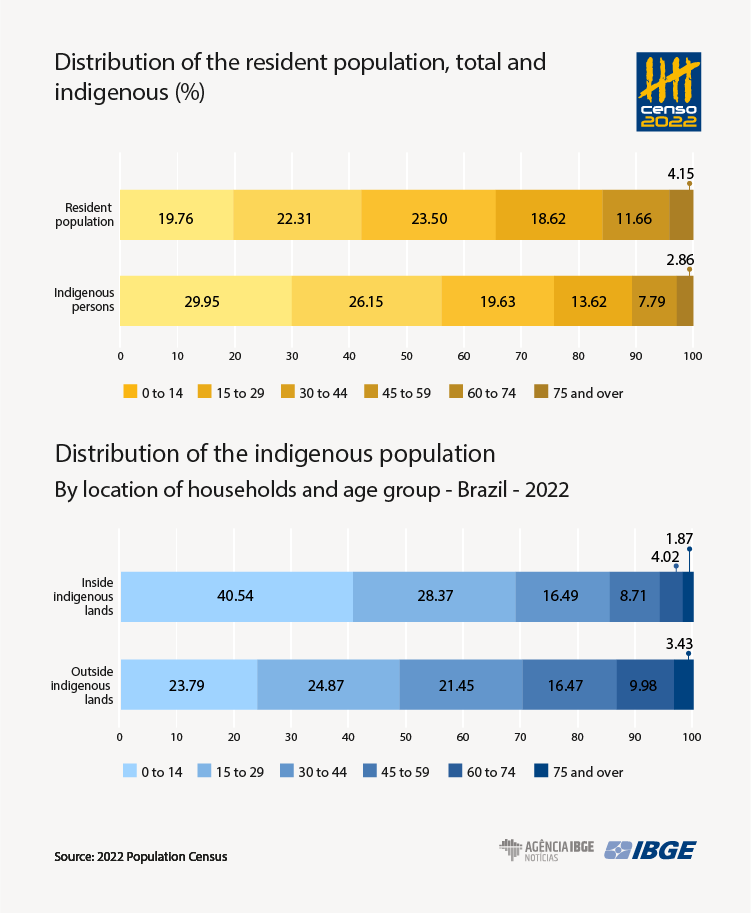
2022 Census unveils number of children and youngsters up to 17 years in the municipalities and indigenous lands, and helps to design educational policies
Considering the age groups recommended to attend basic education, the indigenous population up to 17 years of age adds up to 606,359 indigenous people. The indigenous persons aged under four years, which are 138,152, are distributed among those 51.93% living inside the indigenous lands and 48.07% living outside the indigenous lands.
Among those aged four and five years (68,515), 50.74% live inside and 49.26% live outside these lands; among those aged between six and 10 years (170,201), 49.51% live inside and 50.49% live outside; those aged between 11 and 14 years (130,722) are distributed among those 47,23% living inside and 52.77% living outside the indigenous lands; and in the group aged between 15 and 17 years, a total of 98,769 indigenous persons, 44.61% live inside and 55.39% live outside the indigenous lands.
“One of the highlights of this publication is the division of the indigenous population under 17 years, organized by the ages recommended to attend school. At the municipality and indigenous land levels, we managed to raise that information to subsidize public managers to assess the suitability of the number of schools and teachers and whether or not indigenous students correspond to the amount that should be at school in those age ranges. It is an interesting information from the point of view of educational studies and of subsidies to the education policies,” emphasizes the researcher.
In the comparison between the 2010 and 2022 Censuses, the growth of the indigenous population aged 17 years and less significantly occurred in the indigenous lands Raposa Serra do Sol (more 4,815 in this range), in Roraima, Munduruku (more 3,134), in Pará, and São Marcos (more 2,280 indigenous persons), also in Roraima.
North Region has the lowest ageing index of the indigenous population: 19 persons aged 60 years and over for each 100 indigenous persons up to 14 years of age
The indigenous population as a whole showed an ageing index of 35.55, which points out that there are 35 indigenous persons aged 60 years and over for each 100 indigenous persons aged up to 14 years in Brazil, whereas it is 80.03 for the entire population.
The lowest ageing index of the indigenous population was found in the North Region (19.9), indicating 19 persons aged 60 years and over for each 100 persons aged up to 14 years, followed by the Central-West (29.2), South (41.39), Northeast (61.49) and Southeast (98.23). It can be seen that the Southeast is the only Major Region in which the ageing index of the indigenous population (98.23) is higher than that of the entire population (97.95).
The South Region is the one that shows more distant ageing indexes between the indigenous population (41.39) and the total resident population (95.4), point out that for each group of 100 younger persons, there are less 54 elderly persons in the indigenous population compared with the entire population.
Age pyramid of the indigenous population has a triangular format, steeper in the indigenous lands
The age pyramid of the indigenous population living in Brazil has a triangular format, typical of a younger population, characterized by a base larger than that of the entire population up to the group aged between 20 and 24 years.
However, the base of pyramid points out to a possible reduction in the fertility, considering that the difference among the younger groups, in terms of percentage points, is not that sharper as, for example, the age pyramid of the indigenous population living inside the indigenous lands.
By analyzing the age pyramids of the indigenous population living inside the indigenous lands, it is possible to notice a younger age structure and a more male profile up to 74 years of age, when compared with the indigenous population living outside these territories, which assumes a more female profile from 15 years of age onwards.
“We noticed a difference in the profile of the indigenous population depending on the location in the territory. When we talk about the resident population inside the indigenous lands, we have a very triangular pyramid, with a larger base. It shows us that we have an extremely young population inside the indigenous lands, with a high fertility, which shows a potential replacement and growth of this group,” highlights Antunes.
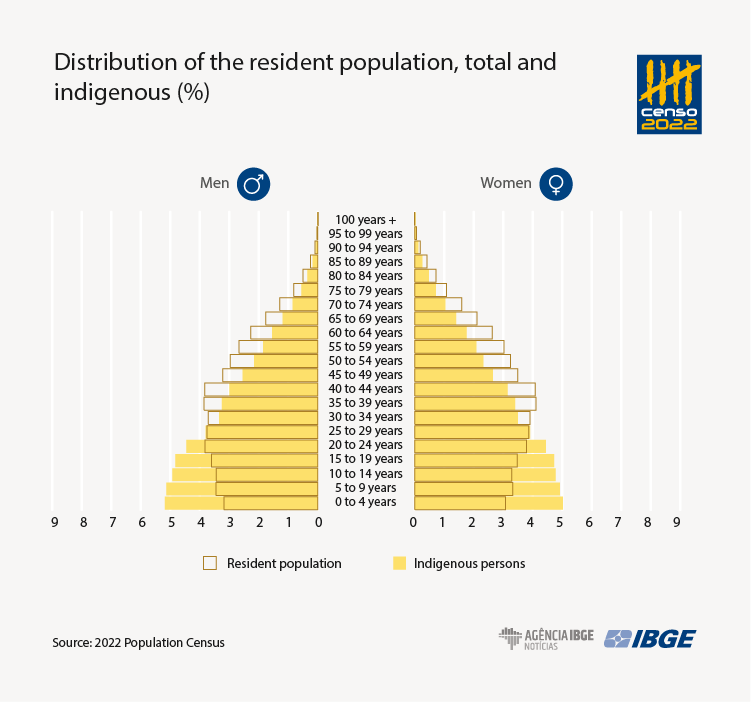

Sex ratio of the indigenous population is 97 men for each 100 women
In Brazil, the sex ratio of the resident population is 94.25, i.e., 94 men for 100 women. In the specific case of the indigenous population, the sex ratio of this traditional group was 97.07, pointing out that 97 indigenous men were identified for each 100 indigenous women in the 2022 Population Census.
This sex ratio points out a difference of more 25,204 indigenous women than the total number of indigenous men in Brazil, 860,020 and 834,816, respectively.
The highest sex ratio is in the North Region (101.11), followed by the South (98.66), Central-West (96.67), Northeast (92.93), with the lowest sex ratio in the Southeast (90.71), in which 90 indigenous men were identified for each 100 indigenous women.
More about the survey
The Population Census is the main source of information about living conditions of the population in all the municipalities in the country and in its internal subdivisions. Of the thirteen enumerations carried out by the IBGE, six of them investigated the color of the population and, from 1991 onwards, this aspect began to be called “color or race”, due to the inclusion of the investigation of the indigenous population, as well as due to the understanding that the classification in the categories of the question exceeded that of the skin color and phenotype, involving multiple criteria of identity belonging.
In 1991, the indigenous category was added to the white, black, yellow and brown categories. An innovation that was maintained in the 2000, 2010 and 2022 Censuses. In 2010, the IBGE took the “color or race” aspect to the Basic Questionnaire, applied to the entire population of the survey, i.e., the entire resident population in Brazil, which was maintained in the 2022 Census, providing more precise comparisons among the decades, as well as a spatial disaggregation. The major innovation in the ethnic-racial identification block in 2022 was the inclusion of the aspect of ethnic-quilombola belonging.


